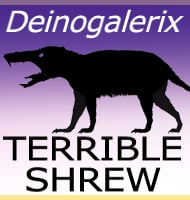Deinogalerix
In Depth Fossils of Deinogalerix are known from the Gargano region of Italy, but it’s important to remember that back in the Miocene Sea levels were much higher resulting in Gargano being an island that was cut off from the mainland. Deinogalerix grew to its large size due to a process called insular gigantism. This … Read more


